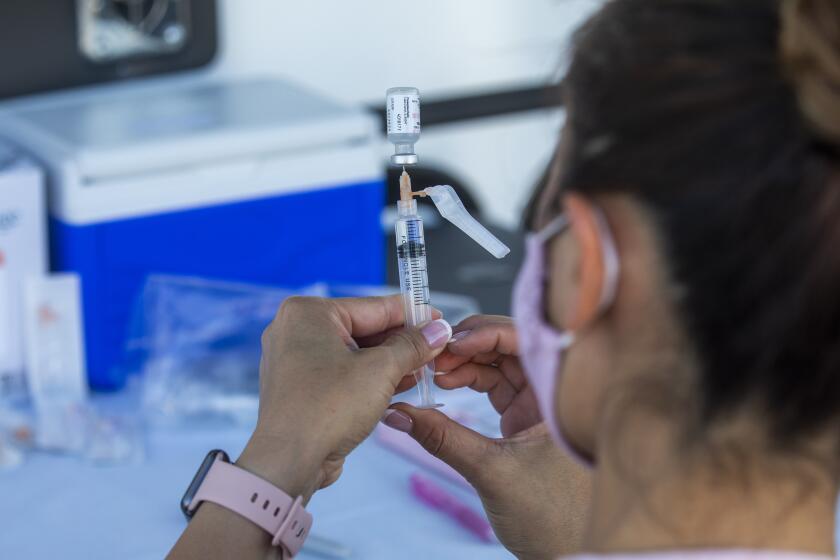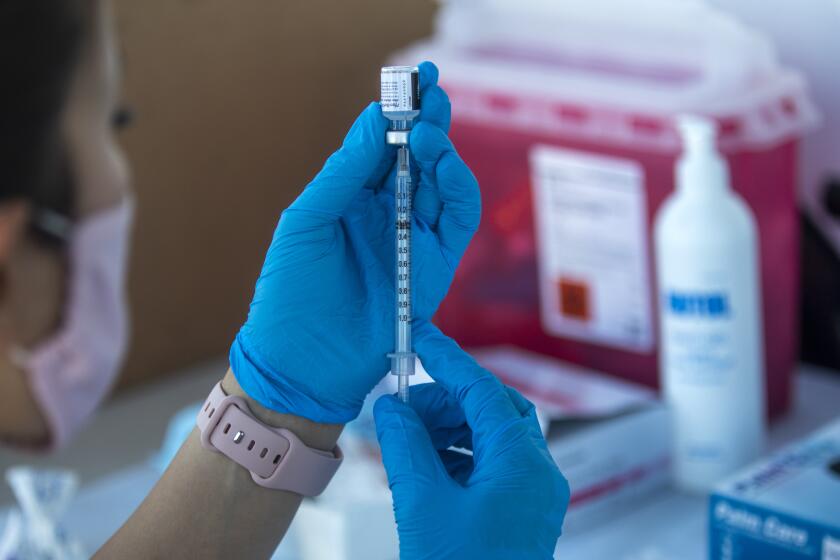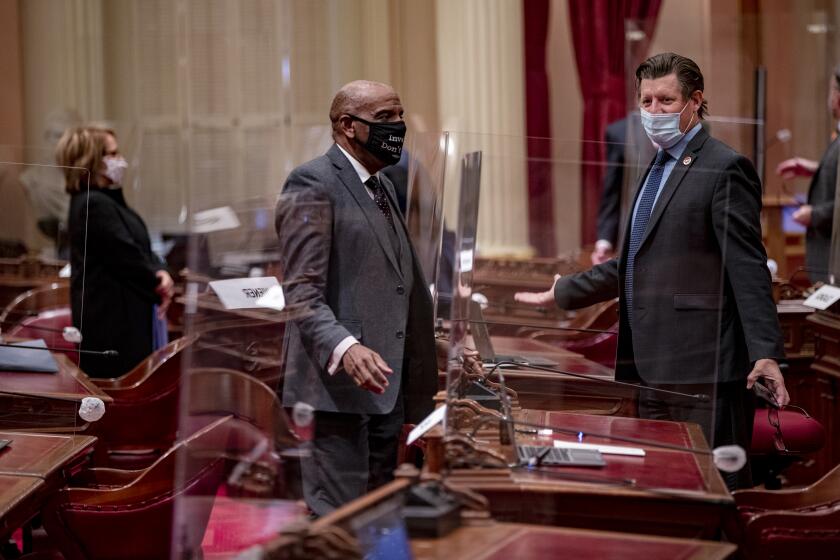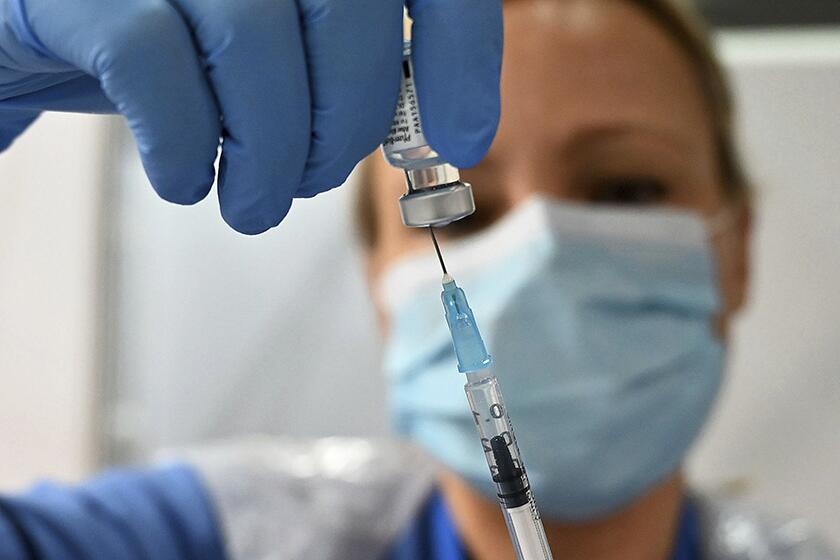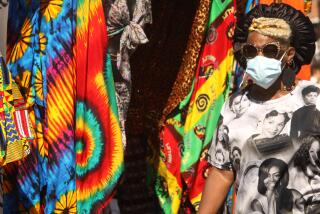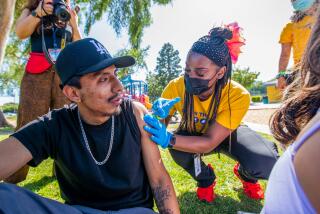Are the COVID surge and Delta variant putting California’s reopening at risk? What we know
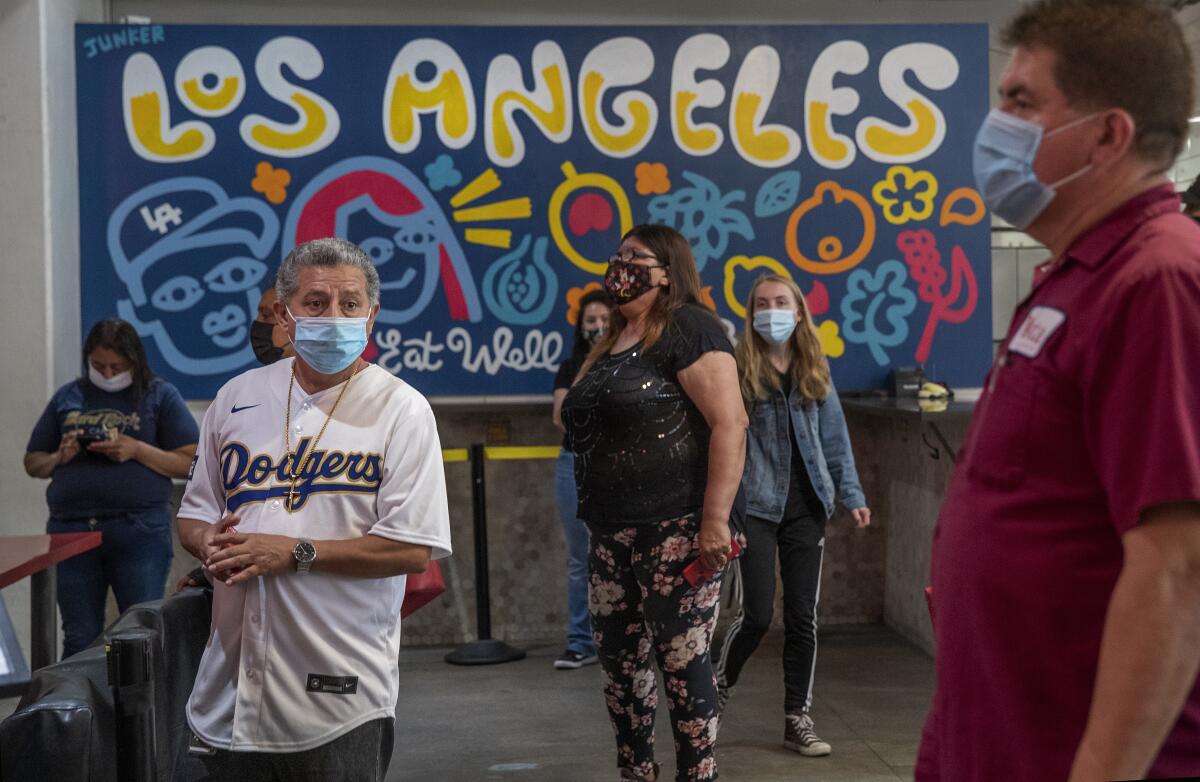
- Share via
Could the recent COVID-19 resurgence force California to walk back its month-old reopening?
The answer is no — at least for now.
Despite the startling increases in new coronavirus infections and hospitalizations over the last few weeks, officials are quick to point out that, so far, this uptick is different from what the state endured earlier in the pandemic.
Even with the latest rise, California’s COVID-19 metrics remain far below the levels seen during previous surges. And there’s confidence that will remain the case, given how much of the population has already been vaccinated.
The spread, officials say, is overwhelmingly occurring among those who have yet to roll up their sleeves. In L.A. County, 99% of new cases involve those who have not gotten their shots.
“Those that are in the hospitals, those that have died, overwhelmingly are people that have not been vaccinated,” Gov. Gavin Newsom said during a news conference Wednesday. “I cannot impress upon you more the power of getting vaccinated. If we want to extinguish this pandemic, this disease, we’ve got to get vaccinated, period, full stop.”
Door-to-door outreach and vaccine requirements at work would help curb coronavirus spread, experts say.
So the focus, at this point, is less on restricting the movement of vaccinated individuals and more about getting the unvaccinated to get their shots.
Still, given the spread of the highly infectious Delta variant of the coronavirus, and in light of the full reopening of California’s economy on June 15 — which presented a host of new opportunities for residents to gather — some counties are urging even vaccinated people to take steps to protect themselves and others.
Both Los Angeles and Yolo counties are now recommending that fully vaccinated people wear masks in public indoor settings as a precaution, though the state has not taken a similar step.
Here is a rundown:
What are the latest numbers?
Though still far below the worst waves of the pandemic, new coronavirus cases have risen substantially across Southern California since late June.
Orange, San Diego and San Bernardino counties have all seen their daily case averages more than triple over the past two weeks.
Orange, San Diego, L.A. and San Bernardino counties have all had their daily case averages more than double over that period, data compiled by The Times show.
Roughly two weeks ago, Orange County was reporting a weekly average of about 48 new cases per day. Now, the figure is 150. During that same time, averages grew in San Diego County from 92 cases per day to 231; in San Bernardino County, from 55 cases per day to 226; and in L.A. County, from 298 cases per day to 1,077.
The U.S. Centers for Disease Control and Prevention now consider L.A. and San Diego, along with Riverside County, to have “substantial” community transmission — the second-worst classification on the agency’s four-tier scale — as all recently recorded seven-day case rates that were over 50 per 100,000 residents.
What about across California?
Over the past week, California has reported an average of 2,937 new coronavirus cases per day, up 171% from two weeks ago, The Times’ data show.
And since June 29, statewide COVID-19 hospitalizations have risen from 1,089 to 1,648, a 51% jump.
Deaths have not climbed at the same pace, however. Over the last week, an average of 31 Californians died from COVID-19 per day, an increase of about 31% from two weeks ago.
An uptick in infections was not necessarily a surprise, given the recent relaxation of restrictions that had long defined California’s pandemic response — such as capacity restrictions on businesses, the closure or limitation of indoor spaces and requirements for physical distancing and widespread masking.
“Some increase of cases in remaining unvaccinated persons is anticipated after removing restrictions and increased mixing,” officials with the California Department of Public Health wrote in an email this week.
But an unwelcome wrinkle is the Delta variant, which is believed to be twice as transmissible as the conventional coronavirus strains. As a result, experts say it preys particularly easily on the unvaccinated.
While some may fundamentally reject rolling up their sleeves for a shot, officials say there are many reasons why people may not have gotten vaccinated.
Where do we stand with vaccinations?
Times data show that 51.8% of all Californians are fully vaccinated to date, though wide regional gaps persist.
In San Diego County, it’s 57%; in Orange County, 54.7%; and in L.A. County, 52.2%.
The rates are much lower in Riverside County (42.1%) and San Bernardino County (39.2%).
But all those counties, as well as the state as a whole, remain short of the vaccine coverage believed necessary to achieve “herd immunity” against the coronavirus — when the sustained transmission of the virus is interrupted. Estimates for that threshold generally range from 70% to 85%.
And given how significantly the vaccination pace has slowed, some of the state’s most populous counties may take months to reach that level — if they ever do.
In a survey conducted by The Times, 12 members of the California Legislature refused to disclose their COVID-19 vaccination status. Eleven are Republicans.
Experts and officials point to a number of factors for why the inoculation campaign has bogged down. First, children younger than 12 aren’t yet eligible to be inoculated against COVID-19.
Some people may remain concerned about potential health effects, despite assurances that the shots are safe. Others simply have been too tied up with responsibilities at work or home to make the time to get vaccinated.
There also are undoubtedly those who fundamentally reject rolling up their sleeves, for personal or political reasons.
That’s proved to be a source of frustration in some corners, especially in light of the recent increases in transmission.
“It just strikes me as enormously selfish,” county Supervisor Sheila Kuehl said Tuesday. “We can’t rely on herd immunity if the herd won’t get their shots.”
The UC San Francisco study concludes that vaccine hesitancy could put older adults at risk and further complicate the goal of “herd immunity.”
What can be done?
One strategy to boost vaccine coverage could involve requirements to get inoculated, such as at workplaces, according to UC San Francisco epidemiologist Dr. Kirsten Bibbins-Domingo.
Employers also could require unvaccinated workers to get tested daily — an approach used elsewhere, she said.
“When being vaccinated becomes the more convenient of the two options, that will drive people to be vaccinated,” she said. “You have to make it slightly less convenient to be unvaccinated at this point.
“If you choose to get tested every day, because you don’t believe in vaccination, that might be fine. But I think, for some, being tested every day or being tested at some very regular interval might be that the thing that says: ‘Well, yeah, when I look at the risk and benefits, the vaccine is looking a little bit better.’”
San Francisco, for instance, has been a leader in imposing vaccination requirements for some. Already, the city has ordered all workers in “high-risk settings” — such as hospitals, nursing homes and residential facilities for older people, homeless shelters and jails — to be fully vaccinated by Sept. 15. An exemption will be available for workers with valid religious and medical reasons, and they will be required to get tested for the coronavirus weekly.
San Francisco also has ordered all 35,000 of its city workers — including police, firefighters, custodians and clerks — to get vaccinated or risk losing their jobs, unless they have a religious or medical exemption, once a vaccine has been formally approved by the U.S. Food and Drug Administration. Currently, all three available vaccines are being distributed under an emergency use authorization.
Some public health experts have said effective approaches for persuading people to get vaccinated include answering questions and making the vaccine even more available to those who may not have prioritized getting the shot, either because they don’t think COVID-19 is a threat to them or because of swirling misinformation surrounding the shots.
“Relationships really matter,” said Dr. Christina Ghaly, L.A. County’s director of health services. Giving people “an opportunity to ask their questions, to get fact-based information about the vaccine, to be given a chance to just talk through their concerns” is an effective approach, she added.
“One-on-one conversations — it’s very labor intensive, not always very fast, it takes time,” she said. “But that’s been the best thing that has really helped.”
More to Read
Sign up for Essential California
The most important California stories and recommendations in your inbox every morning.
You may occasionally receive promotional content from the Los Angeles Times.
